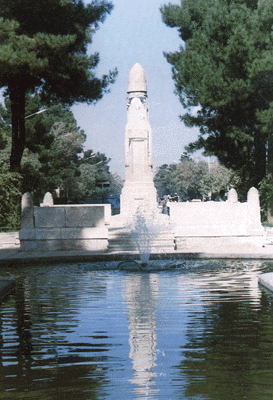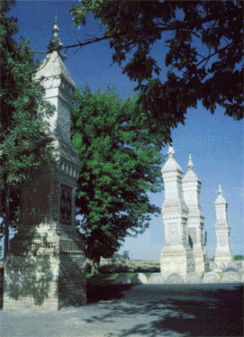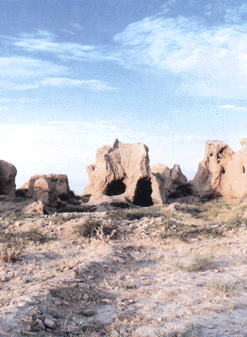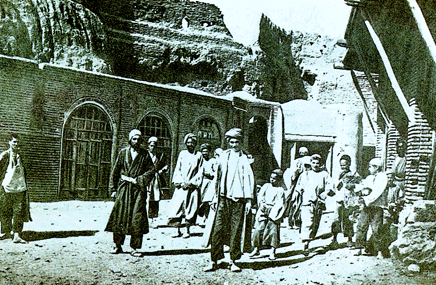| Located on the Silk-Road, Neyshaboor is one of the most ancient cities if Iran. It dates back to the Sassanid monarch, Shapur I. According to recent archaeological discoveries, Neyshaboor shared in trade with the valley of Indus river in Pakistan and the area of Mesopotamia in the 3rd millennium BC.
Recently significant ancient sites, dating to the 3rd and 4th millennium BC, were discovered around the city. It seems that the most ancient evidence related to Neyshaboor is an inscription known as KaŽbe-ye Zartosht (KaŽba of Zoroaster). Dating in origin from the regin of Shapur I, it is also called Tamam Aparakhshtar. One of the most important pre-historical fire-temples, known as Azar-Barzin-Mehr, was located in Neyshaboor and dedicated to the farmers. It was formerly named Abarshahr, but from the Islamic period onwards its name changed into Neyshaboor. In the time of ŽAbdollah ebn-e Taher, Neyshaboor served as a capitel and gradually grew in importance. After the fall of the Taherid dynasty, the Saffarids adopted it as a capitel. Under the Ghaznavids and Saffarids, It was brought to a peak and changed to the wealthiest and most populated Islamic areas. Soon after it razed to the ground, owing to the Mongol invasion. A new city was built on the north-western boundary of the old one shortly after, due to which the city flourished again. It was devastated by an earthquake in 808 AH. Neyshaboor rose to importance under the Timurid dynaty and grew in size and splendour, thanks to the efforts of the people who admire their culture and authorities who are conscious.
Remains of the ancient city of Neyshaboor Covering an area of about 2000 hectares, the remains of the ancient city of Neyshaboor is located on the south-eastern boundary of the present-day Neyshaboor. The area enjoys, ancient hills of Kohandezh, Alb-Arsalan, Sabz-pooshan, Shadiyakh, Tappeh Madraseh, Bazaar, Qanat Tappeh and Takestan. Its National Monuments Registration Number is 216.
Remains of the ancient city of Neyshaboor |




